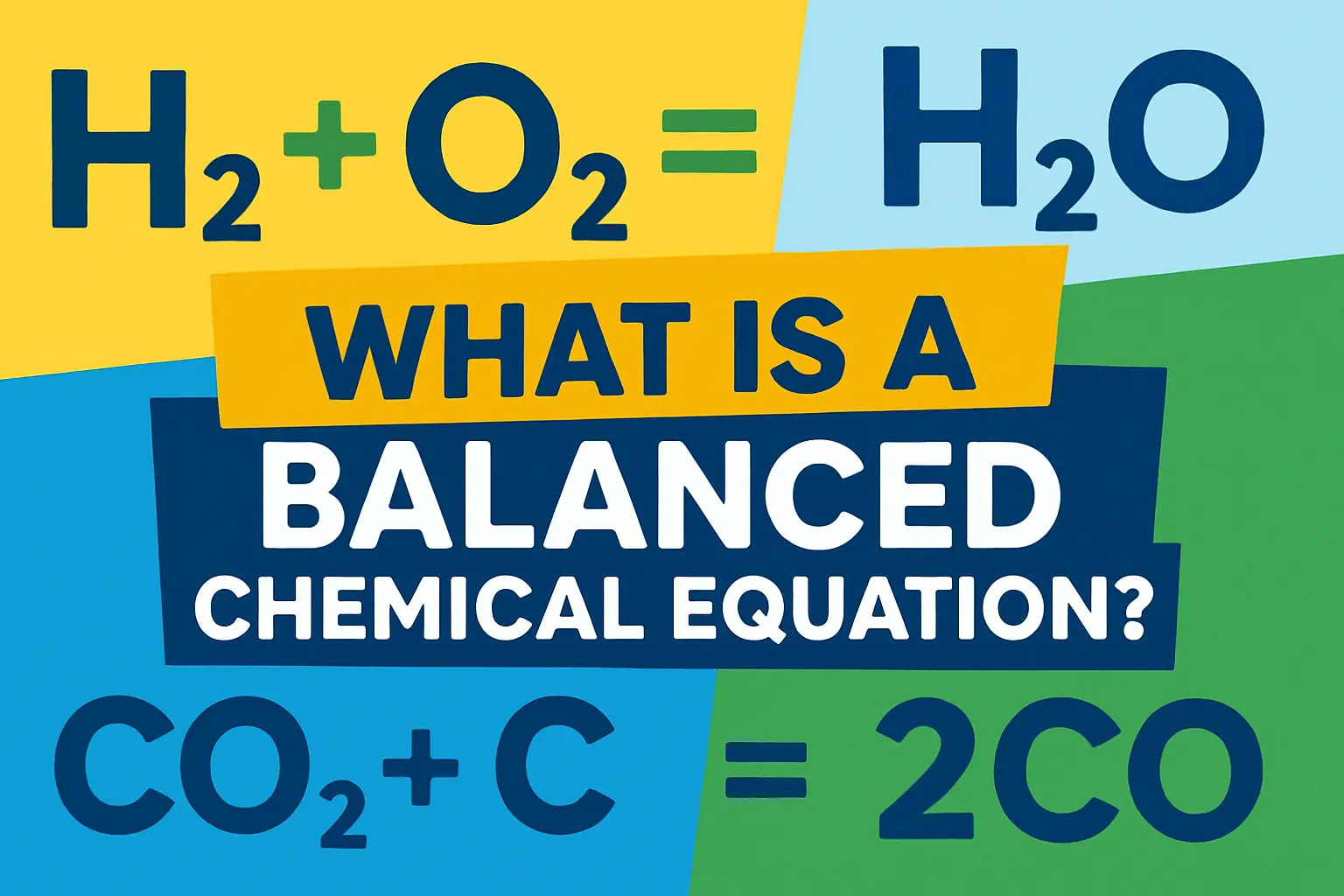A balanced chemical equation is an essential concept in chemistry, especially for school students in India beginning to explore chemical reactions. Understanding this idea helps you grasp the fundamental laws of science and makes solving chemistry problems much easier. In this article, we’ll explain what a balanced chemical equation is, why balancing is important, and how you can easily balance equations yourself.
What is a Balanced Chemical Equation?
A balanced chemical equation represents a chemical reaction with equal numbers of each type of atom on both sides: the reactants (what you start with) and the products (what you get) of the reaction.
This means that atoms are not created or destroyed; they are simply rearranged.
Example:
Unbalanced equation:
H2 + O2 → H2O
Here, you have:
- 2 hydrogen atoms on both sides (H₂)
- 2 oxygen atoms on the left (O₂), but only 1 on the right (H₂O)
This equation does not follow the rules because the number of oxygen atoms is different on both sides.
Balanced equation:
2H2 + O2 → 2H2O
Here:
- There are 4 hydrogen atoms and 2 oxygen atoms on both sides.
Why Is Balancing Chemical Equations Important?
Balancing chemical equations follows the law of conservation of mass. This law states that matter cannot be created or destroyed in a chemical reaction. Every atom present at the start must be present at the end, just rearranged.
In simple words:
Balancing makes sure all the “ingredients” and “results” match up perfectly.
How to Balance a Chemical Equation: Step-by-Step
- Write the skeleton equation.
Example: H2 + O2 → H2O - Count the number of atoms of each element on both sides.
Left: H = 2, O = 2
Right: H = 2, O = 1 - Add coefficients (numbers) in front of molecules to balance them.
Try: 2H2 + O2 → 2H2O - Check both sides again.
Left: H = 4, O = 2
Right: H = 4, O = 2
Both sides are balanced! - Make sure all coefficients are in the simplest whole number ratio.
More Examples of Balanced Chemical Equations
| Unbalanced Equation | Balanced Equation |
|---|---|
| Na + Cl2 → NaCl | 2Na + Cl2 → 2NaCl |
| Fe + O2 → Fe2O3 | 4Fe + 3O2 → 2Fe2O3 |
| C + O2 → CO | 2C + O2 → 2CO |
Tips
- Always balance metals, then non-metals, and balance hydrogen and oxygen last.
- Never change the subscripts (small numbers in chemical formulas), only the coefficients (numbers in front).
- Practice with lots of equations to get better and faster at balancing!
- Remember: A balanced chemical equation is the foundation of solving all types of chemistry problems.
Balanced chemical equations are the backbone of chemistry—they help you understand reactions, perform experiments correctly, and score better in exams. Whenever you write a chemical reaction, make sure the equation is balanced for both understanding and marks!
NCERT Class X Science Question and answer
What is a balanced chemical equation? Why should chemical equations be balanced?
Answer:
“A balanced chemical equation is a chemical reaction equation in which the number of atoms of each element is the same on both the reactant and product sides. It follows the law of conservation of mass, meaning no atoms are lost or gained, only rearranged.
Example: H2 + O2 → H2O is balanced because it has 4 hydrogen atoms and 2 oxygen atoms on both sides.
Chemical equations should be balanced to satisfy the law of conservation of mass, ensuring that matter is neither created nor destroyed during a chemical reaction.”

